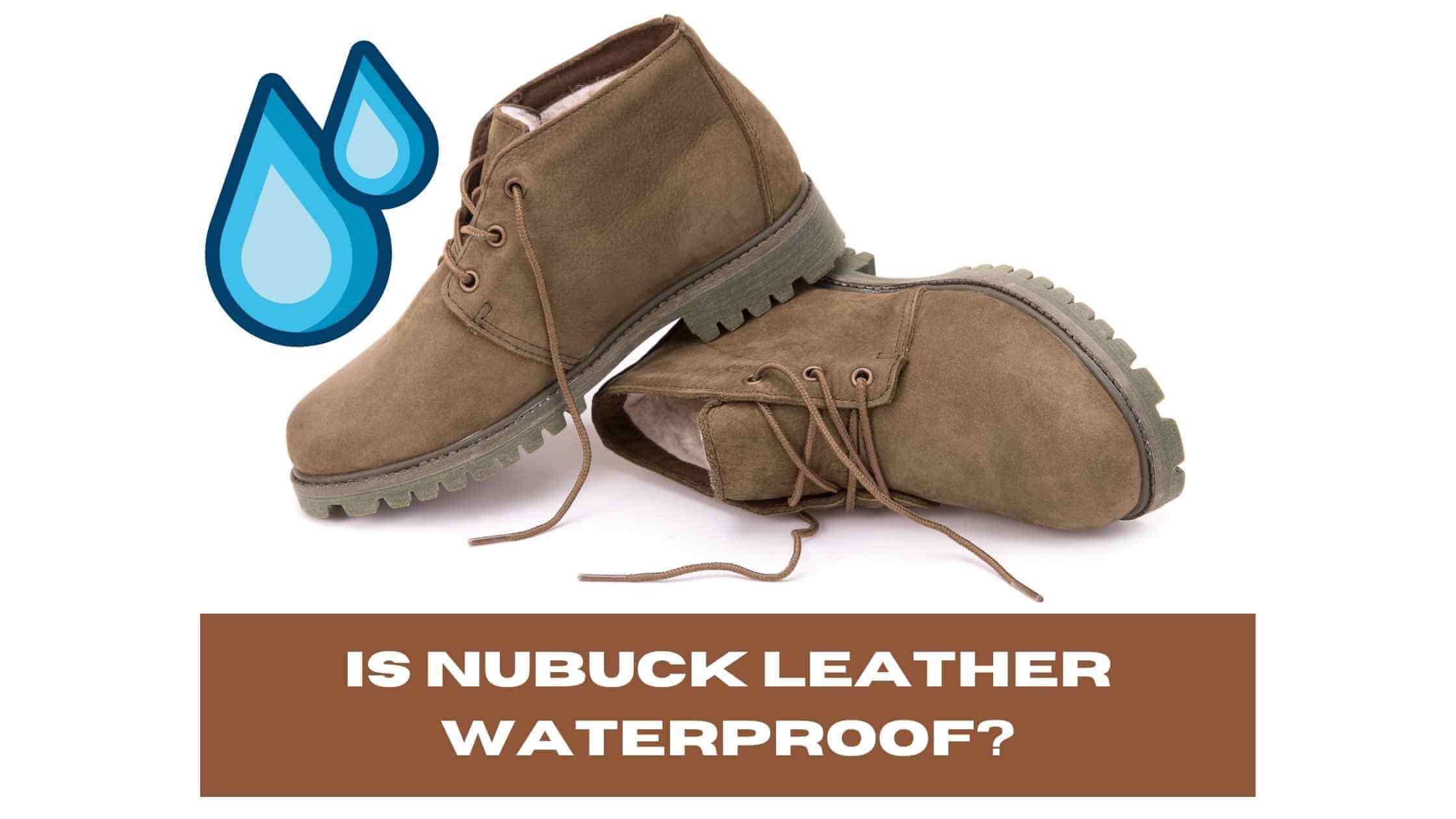Regardless of what item you have that’s made from nubuck leather, you’ll want to familiarize yourself with its waterproofing abilities! Here are all the essential details you’ll want and need to know to protect your investment.
Nubuck leather is not waterproof, and it isn’t even water-resistant. In fact, the fibers of nubuck leather actually attract and hold onto water once they are already wet! If you get nubuck leather too wet or don’t dry it out properly, it can permanently discolor or stain your leather.
Does nubuck leather need waterproofing?
If you intend to use your nubuck leather good anywhere, you’ll undoubtedly want to get a waterproofing product that you can trust. While nubuck leather technically has some water-resistant properties, since it’s made from animal skin and naturally has water resistance, its tolerance is very low.
Before you consider using or wearing your nubuck leather product anywhere at all, please give it a proper dose of a waterproofing agent.
Fun Fact: Conseil National Du Cuir states that waterproofing spray can also help prevent staining.
Can you wear nubuck in the rain?
This question makes total sense. You purchased beautiful nubuck leather shoes and want to wear them even when bad weather threatens you. However, you’ll have to consider protecting your investment, too. You shouldn’t wear nubuck leather in the rain, even if it’s just a light sprinkle. It isn’t designed to handle rain and can quickly get damaged to the point of intense care to repair it.
Nubuck leather can withstand slight splashes and a drop or two of direct water, but that’s about it. You shouldn’t wear them deliberately on a rainy day! You should use an outdoor spray or gaiters if you insist on wearing your new nubuck leather shoes on a stormy day.
Hint: Make sure you know how to clean your nubuck leather afterward to help keep them looking clean and restored!
What happens to nubuck when it gets wet?
Since nubuck leather isn’t finished leather, it can take on a lot more water than you’d think if it gets wet. When water hits it, the color will darken, and you’ll be able to spot where the drops hit and spread. If it gets too wet and/or isn’t treated after getting wet, you can end up with damage.
Fun Fact: Suede can be permanently discolored by rain, but nubuck should return to its natural color after drying completely.
While this is reassuring, you’ll still want to ensure that you aren’t deliberately putting your nubuck leather through hardship by wearing it during rainy weather when you really shouldn’t!
How long does nubuck take to dry?
The actual drying time of the nubuck depends on a few factors. These include:
- The saturation of the water to the leather
- How long it takes between it getting wet and you starting to dry it
- The cleaning and drying technique that you use
Drying water out of nubuck leather is going to be a long process that also has to be gentle because of the sensitivity of nubuck leather itself. Drying it includes sopping up excess water, allowing it to dry naturally, and buffing out any remaining water marks left over. So, the timing can vary greatly.
You can assume it’ll take a day or two, at the least. Is this amount of time and effort (and stress, to be honest) worth wearing your shoes in the rain?
How to waterproof nubuck leather
It’s starting to make sense, now, just why waterproofing nubuck leather is such a good idea, right? Exactly. If you do want to wear your nubuck shoes, boots, coat, handbag, etc., as often as possible. In that case, you’ll want to apply a spray or wax, or polish that will waterproof your nubuck or leather as much as possible.
While these products won’t make your nubuck completely waterproof, they can really help protect the sensitive leather underneath from excess water damage.
Hint: Make sure that you choose a product that is going to be recommended and safe for nubuck and suede since these have different needs than classic finished leather.
How often should you waterproof nubuck?
Waterproofing is not a “one-and-done” process, unfortunately. You’ll need to reapply the waterproofing product regularly if you put your nubuck through wear and tear. According to Permanent Style, you’ll want to schedule another application after cleaning and before rainy or snowy seasons.
To help cut down on any weak points in your waterproofing agent, you’ll want to specifically shop for and use a long-lasting waterproofing spray. This will be a better application process than wax since you will distribute it more evenly in the spray format.
Make sure to allow the spray to work into the leather thoroughly before using it. You should at least let it dry/absorb overnight. You can also find instructions for the drying process on the product itself that you do buy.
However, you’ll still want to carefully blot off any excess water sitting on your treated nubuck leather. Just because you have a reliable protectant on your product doesn’t mean that you can leave water sitting on it!
Can you clean nubuck with water?
It may seem like a strange question, considering how we just talked extensively about nubuck’s water sensitivity. You technically can use a small amount of water to help clean nubuck with water. However, you’ll never want to use that as your first option. You can use many products that will do a much better job without putting your sensitive nubuck at risk.
Due to the open and sensitive fibers of nubuck leather, it isn’t water-resistant or waterproof. Worse, it can even attract water once it’s already gotten wet. Since the recovery process for wet nubuck can be stressful and intense, you’ll want to protect your nubuck with purpose-designed waterproofing agents before you head out in potentially stormy weather!
Know someone who wants to do whatever they can to help protect their nubuck leather purchase? Please share this with them to help them see the value of waterproofing!

